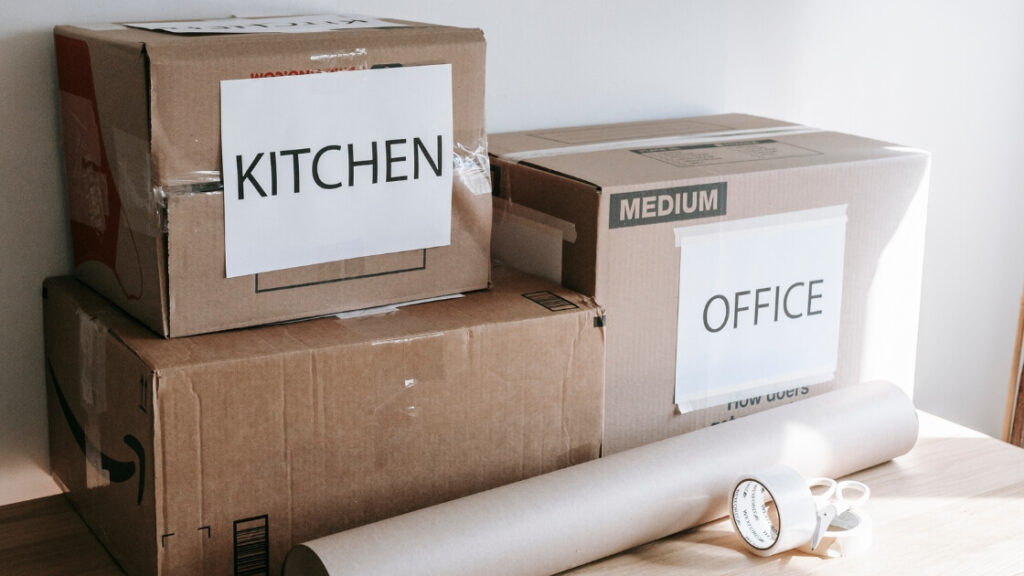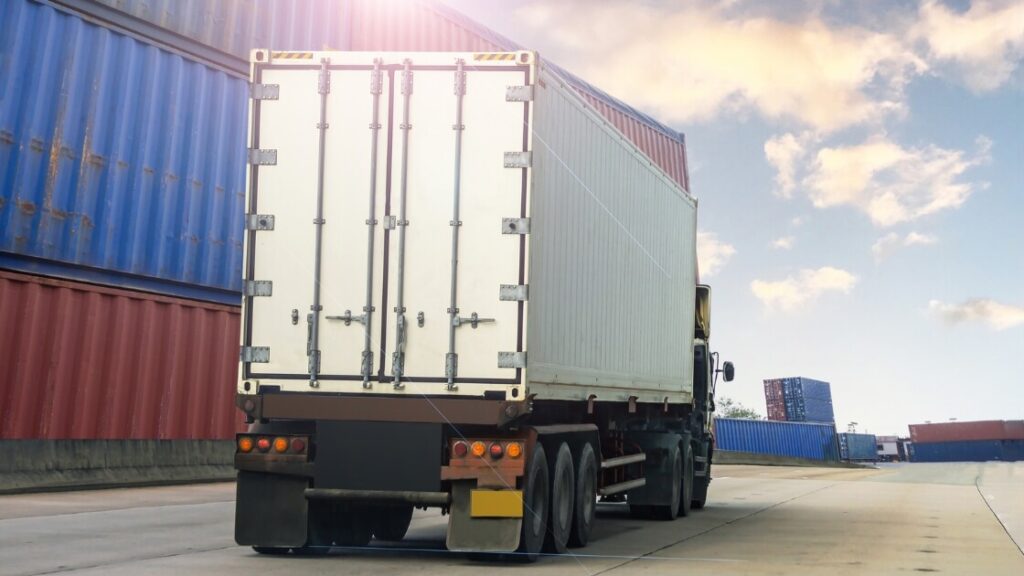Shipping to Germany from USA especially large items across the Atlantic can be a daunting task due to several challenges. Volume restrictions, weight limitations, and customs regulations can significantly impact the cost and complexity of the process when you ship to Germany. Additionally, ensuring the safe and timely arrival of large items requires careful planning and coordination.
This guide aims to provide valuable insights into the intricacies of shipping large items from the US to Germany. By understanding the potential hurdles and best practices, you can navigate the process more efficiently and effectively.
One of the key factors to consider is the choice of service when you ship to Germany. Sherpr offers a reliable and comprehensive solution for managing the entire shipping process. Their expertise in international logistics can help you streamline operations, reduce costs, and ensure a smooth delivery.
Preparing for Shipment
Preparing large items for shipment requires careful planning to ensure a smooth, hassle-free process. Key steps include thorough documentation, item inspections, and, when necessary, disassembly to protect items during transit and comply with international regulations.
Documentation: Start by creating a detailed inventory list that outlines each item’s description, quantity, dimensions, and weight. This information is crucial for customs clearance and insurance purposes. Depending on the item and its destination, you may need to obtain an export license. Accurate customs declarations when you ship to Germany are also essential to avoid delays and penalties including the item’s value, purpose, and any applicable tariffs.
Inspections: Inspect the item thoroughly to assess its condition, noting any existing damage, wear, or missing parts and vital details for insurance and repairs. Choose appropriate packaging based on the item’s fragility and shipping distance, using materials like crates, pallets, or custom packaging to ensure protection.
Disassembly: For some items, disassembly may be necessary to reduce size or facilitate easier handling. Label all parts clearly and secure them to prevent loss or damage. Maintain detailed records, including photos and diagrams, to guide reassembly and provide evidence if needed.
Tips for Preparation

- Consult Experts: When in doubt, seek advice from shipping professionals or expert packers.
- Use Quality Packaging: Invest in sturdy crates, bubble wrap, and other protective materials.
- Consider Insurance: Purchase insurance to safeguard your items against potential loss or damage.
- Label Clearly: Clearly mark packages with descriptions, destination addresses, and contact information to ensure they reach the correct location.
- Follow Shipping Guidelines: Adhere to your shipping company’s requirements to avoid complications.
By following these steps, you can enhance the safety and reliability of your shipments, ensuring your large items arrive at their destination intact.
Shipping Cars

Shipping a car overseas can be a complex process, but with proper planning and preparation, it can be a smooth experience. One of the most important decisions you’ll need to make is whether to choose container shipping or roll-on/roll-off (RoRo) services.
- Container Shipping: This option involves loading your car into a shipping container. It’s suitable for cars needing extra protection or being shipped along with other items. However, it can be more expensive and time-consuming.
- RoRo Services: This method involves driving your car onto a specialized ship. It’s generally a faster and more cost-effective way to ship to Germany, but it may offer less protection against the elements.
Required Documentation
- Export documents: Obtain the necessary export documents from your local customs office. These may include an export declaration, bill of lading, and possibly a certificate of origin.
- Import documents: Research the import requirements of the destination country. You may need to provide documentation related to vehicle registration, emissions standards, and customs duties.
Preparing Your Car to Ship to Germany
- Clean and inspect: Thoroughly clean your car to remove any dirt, debris, or fluids that could cause damage. Inspect the vehicle for any mechanical issues and address them before shipping.
- Drain fluids: Drain the battery and any fluids that could freeze during transit. This will help prevent damage and potential environmental hazards.
- Remove valuables: Remove any personal belongings or valuables from the car to avoid theft or loss.
Customs Procedures
- Declare accurately: Declare the value of your car accurately to avoid customs penalties.
- Prepare for inspections: Be prepared for customs inspections, which may involve checking the vehicle for prohibited items or verifying its condition.
- Pay duties and taxes: Pay any applicable customs duties and taxes according to the destination country’s regulations.
Sherpr’s Assistance
Sherpr can provide invaluable assistance with car shipping logistics. Their expertise in international shipping can help you navigate the complexities of the process, from documentation to customs clearance. By partnering with Sherpr, you can ensure a smooth and hassle-free experience when shipping your car overseas.
Shipping Motorcycles
Shipping a motorcycle overseas requires meticulous preparation to ensure its safe arrival. Here’s a step-by-step guide:
- Clean and Inspect: Start by thoroughly cleaning your motorcycle to remove dirt, grime, and fluids that could cause damage. Inspect the bike for any mechanical issues and resolve them before shipping.
- Drain Fluids: Drain the engine oil, coolant, and fuel to prevent leaks and reduce environmental risks during transit.
- Remove Accessories: Detach non-essential accessories, such as mirrors, windshields, or luggage racks, to minimize the risk of damage during shipment.
- Prepare the Battery: Disconnect the battery and store it safely to avoid corrosion.
Packaging
- Choose Appropriate Packaging: Use sturdy crates or boxes designed for motorcycle shipping, ensuring enough space for padding.
- Secure the Motorcycle: Fasten the bike securely within the crate using straps and tie-downs. Add padding around vulnerable areas like handlebars and wheels.
- Add Protective Layers: Use bubble wrap or foam padding to provide extra cushioning and prevent scratches.
Choosing a Shipping Method

- Container Shipping: Provides maximum protection by placing the motorcycle in a shipping container, though it can be costly.
- Air Freight: Offers faster transit times but at a higher cost, ideal for urgent shipments.
- RoRo (Roll-on/Roll-off) Shipping: More affordable, this method involves driving the bike onto a specialized ship, but it offers less protection.
Required Documentation
- Export Documents: Obtain necessary export documents when you ship to Germany, such as an export declaration, bill of lading, and potentially a certificate of origin.
- Import Documents: Research the destination country’s import requirements, including vehicle registration, emissions standards, and customs duties.
By following these steps and selecting the right shipping method, you can ensure your motorcycle is transported safely and efficiently to its destination.
Shipping Bulky Furniture
Shipping bulky furniture across international borders can be a complex endeavor. Fortunately, there are several options available to facilitate this process.
International Movers: These companies specialize in handling large-scale moves, including international relocations. They offer comprehensive services that can include packing, loading, transportation, customs clearance, and unpacking at your destination. While international movers can be more expensive, they offer convenience and peace of mind.
Container Services: If you prefer a more hands-on approach, consider using container services. These services allow you to pack your furniture into a shipping container and arrange for its transportation. This option can be more cost-effective but requires careful planning and coordination.
Preparation and Packing
- Disassembly: If possible, when you ship to Germany disassemble furniture into smaller components to reduce its size and make it easier to transport. Be sure to label each part carefully to facilitate reassembly.
- Packing: Use sturdy packing materials, such as bubble wrap and cardboard boxes, to protect your furniture from damage during transit. Consider using furniture blankets or custom-made crates for particularly fragile or valuable items.
- Protection: Ensure that all sharp edges and corners are adequately protected to prevent damage to the furniture or the shipping container.
Handling Large Items
- Lifting and moving: Use proper lifting techniques to avoid injuries. Avoid lifting heavy items alone, and consider using dollies or moving equipment to assist with transportation.
- Positioning: Carefully position furniture within the shipping container to maximize space and minimize the risk of damage.
- Securing: Use straps or tie-downs to secure furniture in place and prevent it from shifting during transit.
By following these guidelines, you can effectively ship your bulky furniture internationally and ensure that it arrives at your destination in excellent condition.
Navigating Customs and Regulations

Shipping large items to Germany involves navigating specific customs requirements and import regulations. Understanding these guidelines is essential to ensure a smooth and timely delivery.
Key Customs Requirements
- Import licenses: Depending on the nature of the items, you may need to obtain import licenses or permits from German authorities.
- Customs declaration: Complete a detailed customs declaration, providing accurate information about the items being shipped, their value, and their intended use.
- Duties and taxes: Be prepared to pay customs duties and taxes based on the value and type of the items.
- Prohibited and restricted items: Familiarize yourself with the list of prohibited and restricted items in Germany. Ensure that your shipment does not contain any items that violate these regulations.
Practical Advice for Compliance
- Research thoroughly: Research the specific customs requirements for the items you are shipping and the destination country.
- Prepare documentation in advance: Gather all necessary documentation well in advance to avoid delays.
- Provide accurate information: Ensure that the information provided in your customs declaration is accurate and complete.
- Consider a customs broker: If you are unsure about the customs procedures or require assistance, consider hiring a customs broker who can guide you through the process.
By understanding and complying with the customs requirements and import regulations for Germany, you can significantly reduce the risk of delays or issues during the shipping process.
Managing Delivery and Unpacking
Once your large items arrive in Germany, it’s important to manage the delivery process effectively and unpack them carefully.
- Coordinate delivery: Communicate with the shipping company to schedule a convenient delivery time to ship to Germany. Ensure that someone is available to receive the items and assist with unloading.
- Inspect items: Upon delivery, carefully inspect the items for any damage or signs of tampering. Take photos to document any issues.
- Unpack carefully: Unpack the items with care, following any instructions provided by the manufacturer.
- Reassemble if necessary: If the items were disassembled for shipping, reassemble them according to the original instructions.
- Address issues promptly: If you notice any damage or defects, contact the shipping company or seller immediately to report the issue and initiate the claims process.
- Dispose of packaging: Properly dispose of the packaging materials in accordance with local regulations.
By following these tips, you can ensure a smooth delivery and unpacking process, minimizing the risk of damage or delays.
Final Word
Shipping large items to Germany involves several key steps, including thorough preparation, proper packaging, and careful consideration of shipping methods. It’s essential to research customs requirements, obtain necessary documentation, and ensure that your items are adequately protected for transit. By planning ahead and considering factors such as weight, dimensions, and the nature of the items, you can choose the most suitable shipping option. To streamline the process when you ship to Germany and minimize stress, consider utilizing services like Sherpr, which offers comprehensive solutions for international shipping.



